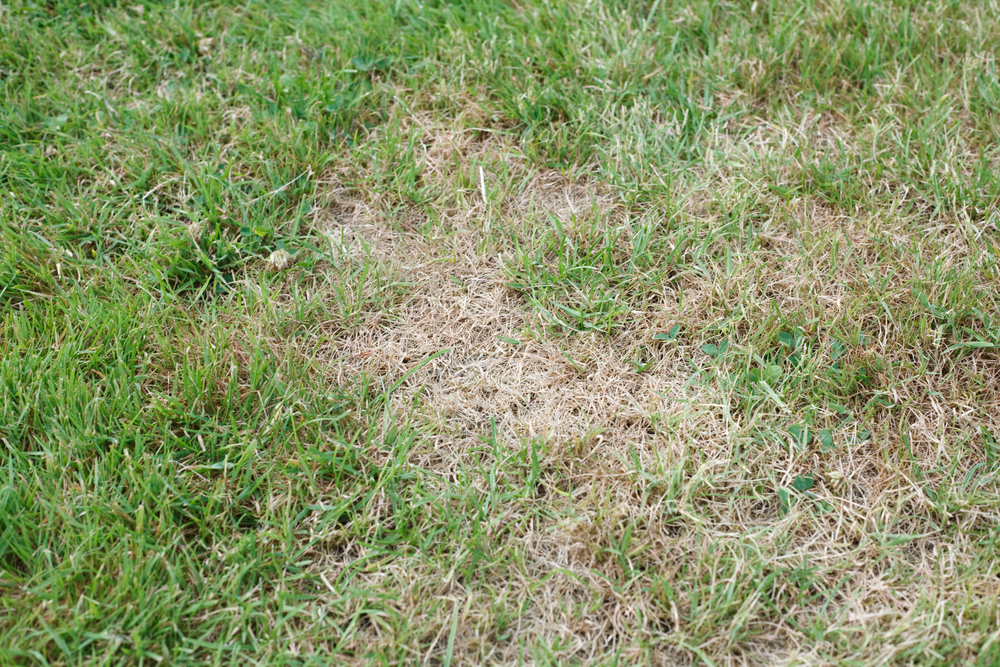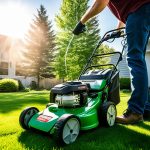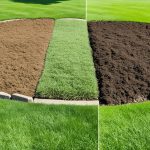Few things are more frustrating for homeowners than watching a healthy green lawn fade to brown under the summer sun. But before assuming the worst, it helps to understand why this happens and whether the grass is truly dead or simply dormant. In many cases, a brown lawn is not a lost cause but a natural response to heat and drought.
Here’s what you need to know about browning grass, how to identify the difference between dormancy and damage, and how to support your lawn through recovery.
Understanding Dormancy: A Natural Defence Mechanism
Grass goes dormant as a survival strategy. When water becomes scarce and temperatures rise, many turf varieties stop growing and shift energy to protecting the roots. The result is a lawn that looks dry and brown above ground, but often remains alive just beneath the surface.
Cool-season grasses such as perennial ryegrass, fescue, and Kentucky bluegrass are particularly prone to summer dormancy. Once conditions improve, these grasses usually begin to green up again without the need for reseeding or major repairs.
How to Tell the Difference Between Dormant and Dead Grass
Not all brown grass is dead. A few simple checks can help you assess the health of your lawn:
- The tug test: Gently pull on a few blades of brown grass. If they resist and stay rooted, the grass is dormant. If they pull out easily, the roots have likely died.
- Inspect the crown: At the base of each blade is a small, light-coloured crown. If this part is still firm and white, the plant is alive. A mushy or blackened crown suggests decay.
- Look for uniformity: Dormant grass usually turns brown evenly across the lawn. Irregular patches often point to other issues like pests, disease, or localised dryness.
Common Causes of Summer Browning
While dormancy is natural, there are other reasons your lawn may turn brown in summer. Understanding the underlying cause helps guide the right solution.
1. Lack of water
The most obvious culprit is insufficient moisture. Lawns typically need around 2.5 centimetres (1 inch) of water per week. During droughts or heatwaves, they may need slightly more. If the lawn hasn’t been watered regularly, it may enter dormancy to conserve energy.
2. Heat stress
Extended periods of high temperatures, especially above 30°C (86°F), cause significant stress to cool-season grasses. These conditions can thin out growth, fade colour, and slow recovery from mowing or wear.
3. Mowing too short
Cutting the grass too low in summer reduces the lawn’s ability to shade its roots and retain moisture. This exposes it to greater heat stress and speeds up browning.
4. Pest activity
Insects like lawn grubs and chafer beetle larvae feed on grass roots, causing patches to brown and die off. If the turf lifts easily like a carpet, pests may be the problem.
5. Fungal disease
Hot and humid weather encourages fungal issues such as brown patch, dollar spot, and rust. These often appear as irregular patches or rings and may spread rapidly without treatment.
6. Dog urine or foot traffic
Small brown patches with a green ring around the edge are often caused by dog urine. Repeated wear from pets or people walking on dry turf can also damage roots and compact the soil.
How to Help a Brown Lawn Recover
Once you’ve identified the likely cause of browning, the next step is to take action. Recovery methods vary depending on whether the grass is dormant or damaged.
If the lawn is dormant:
- Water deeply: Provide a thorough soak two to three times a week to moisten the root zone. Avoid daily light watering, which encourages shallow roots and increases stress.
- Stop fertilising: Dormant grass doesn’t need feeding. Fertilising in extreme heat can burn the lawn and delay recovery.
- Mow less: Allow grass to grow taller to shade the soil and reduce further stress. Only trim the top third of the blades when necessary.
- Reduce use: Limit walking or playing on the lawn while it recovers. Heavy traffic can damage already stressed turf.
With patience and consistent care, most lawns will return to green within two to three weeks once rain or cooler weather arrives.
If the lawn is dead or patchy:
- Overseed bare areas: Choose a seed blend that matches your existing lawn and is suited to your climate. Late summer or early autumn is ideal for overseeding.
- Aerate the soil: Core aeration improves airflow, allows moisture to penetrate deeper, and relieves compaction.
- Apply a balanced fertiliser: Once temperatures begin to drop, apply a slow-release fertiliser with moderate nitrogen and higher potassium to support regrowth.
- Water consistently: Keep newly seeded or repaired areas moist during germination and early growth.
When to Reseed vs Wait
It’s important not to rush into reseeding a lawn that is only dormant. Seeding during high heat often leads to poor germination and wasted effort. If the grass is evenly brown, wait until temperatures cool. However, if bare patches remain after rainfall and cooler nights return, reseeding may be necessary to restore coverage.
Preventing Future Summer Browning
While some browning is unavoidable in extreme weather, there are steps you can take to strengthen your lawn and reduce future stress.
- Water properly: Establish a routine of deep, infrequent watering early in the morning.
- Mow higher in summer: Taller grass helps shade the soil and supports deeper roots.
- Feed seasonally: Apply the right fertiliser at the right time. Avoid high-nitrogen products in summer.
- Improve soil health: Regular aeration and the addition of compost or organic matter will help the soil retain moisture and nutrients.
- Control pests and weeds: Stay ahead of common lawn problems with early detection and treatment.
A brown lawn in summer isn’t always a disaster. In many cases, it’s simply your lawn taking a break from the heat. With proper care, the right watering schedule, and some seasonal adjustments, your grass can recover well and come back stronger next season.





